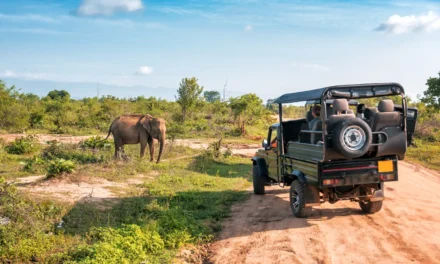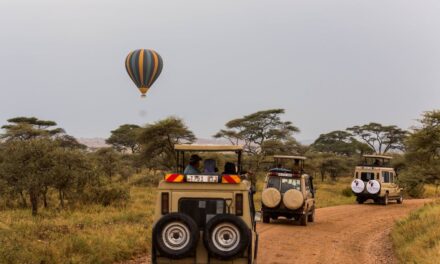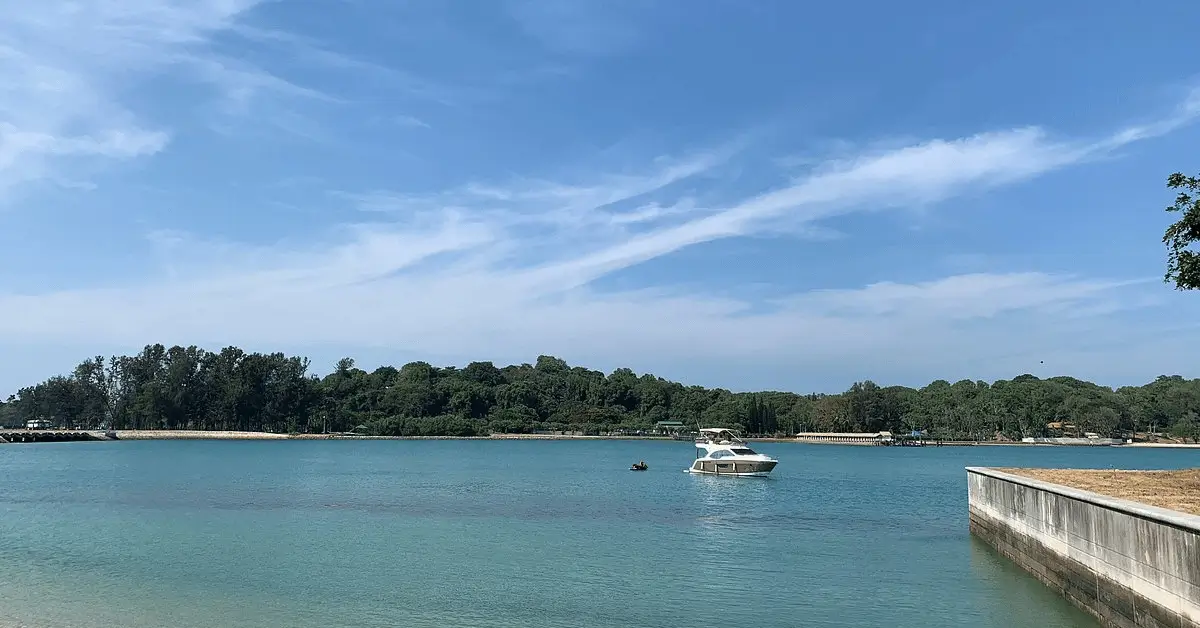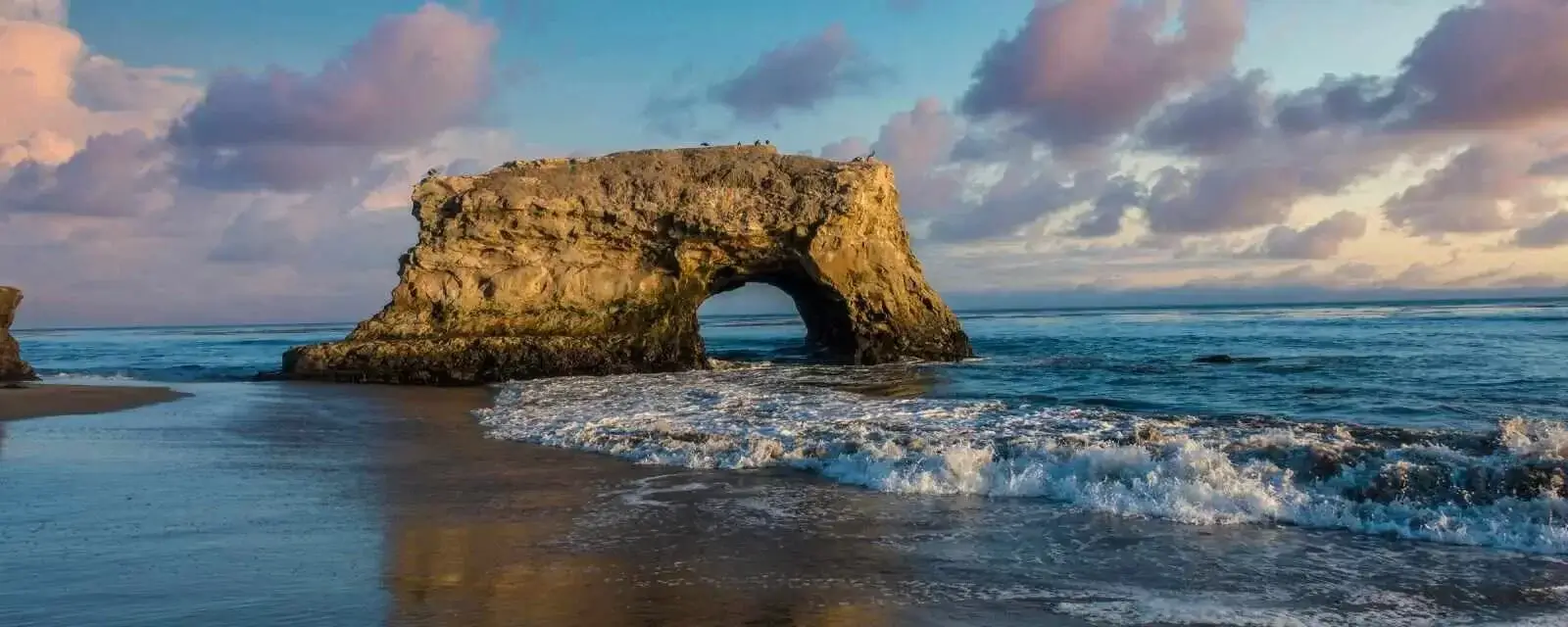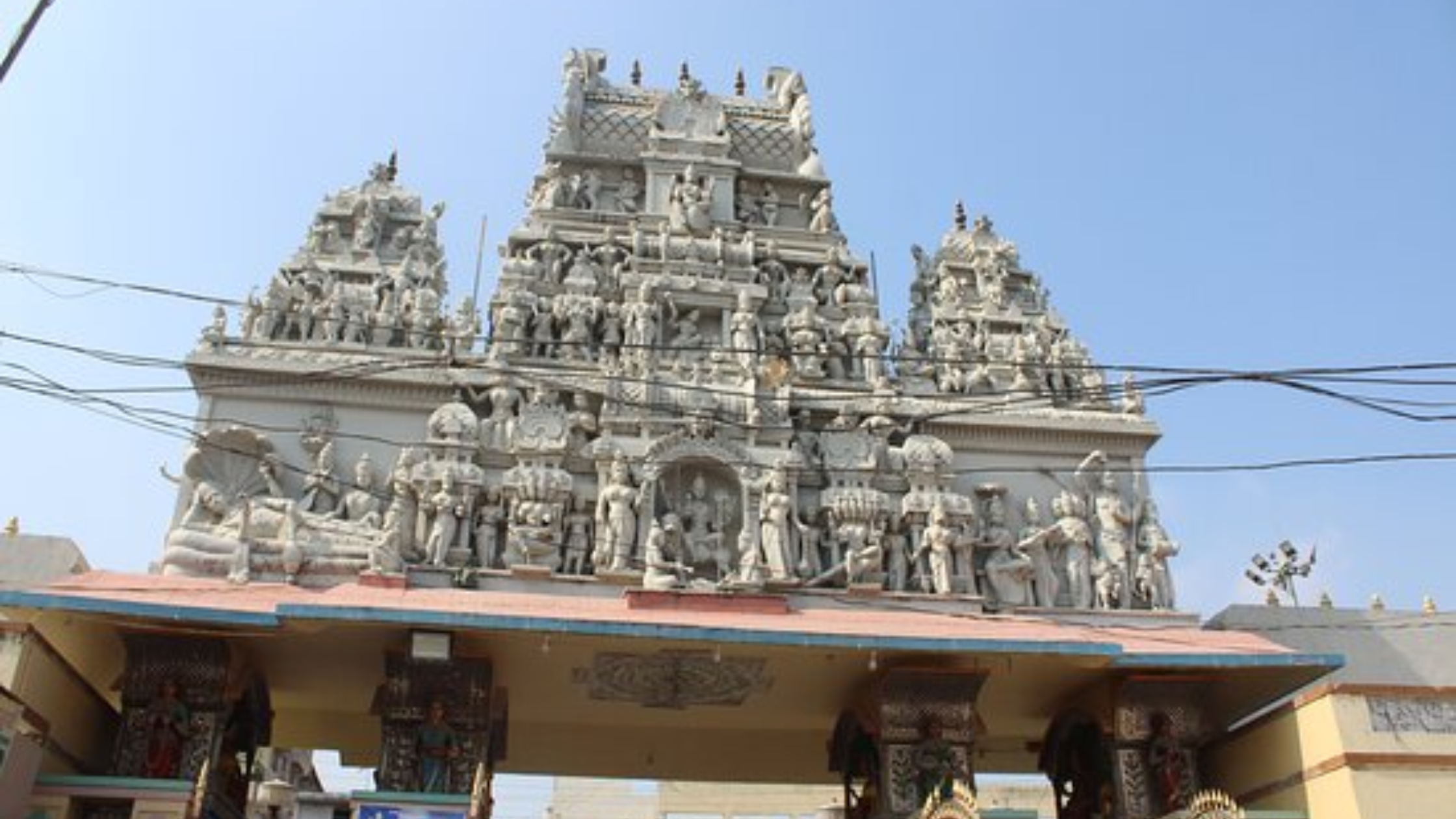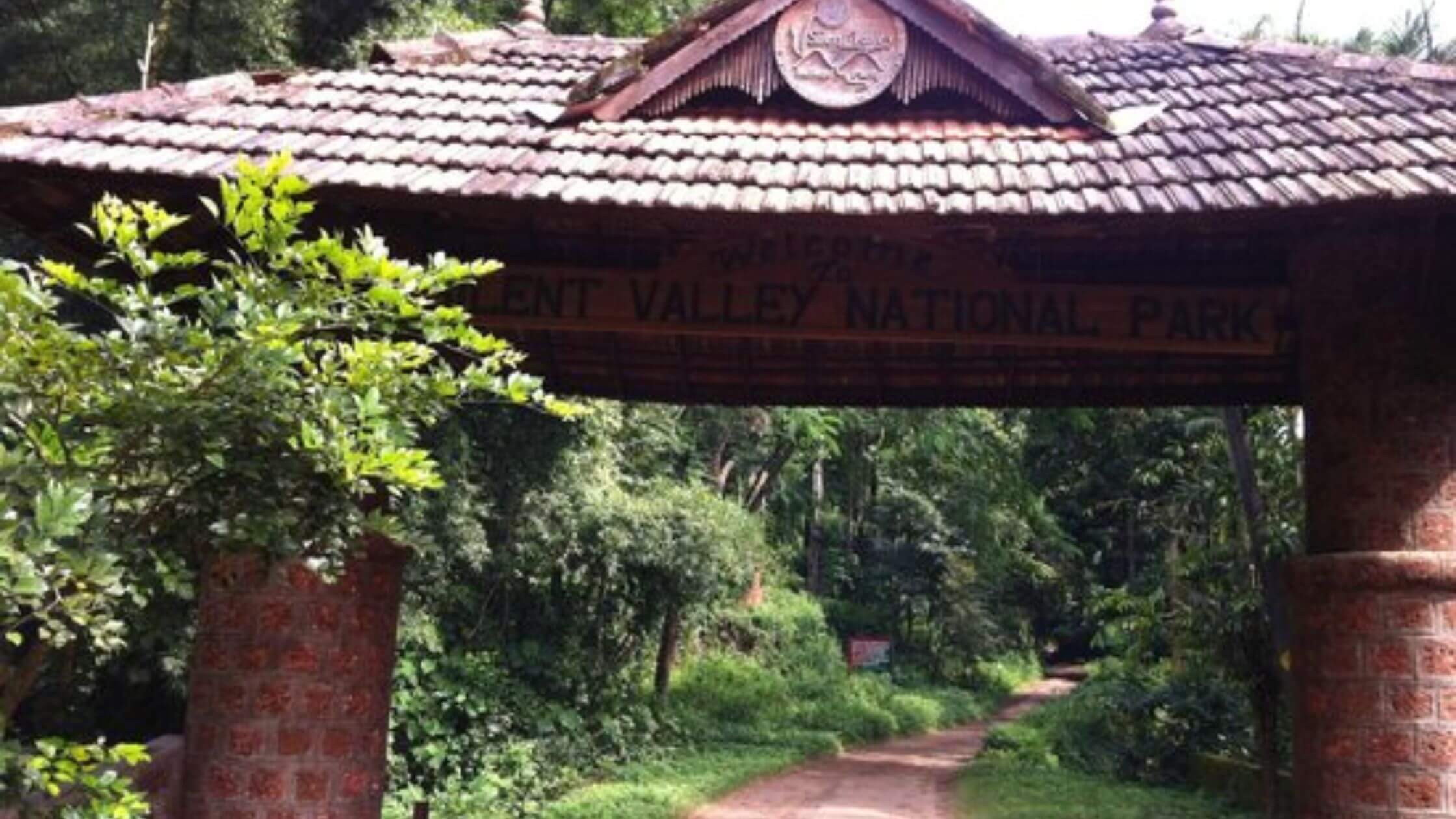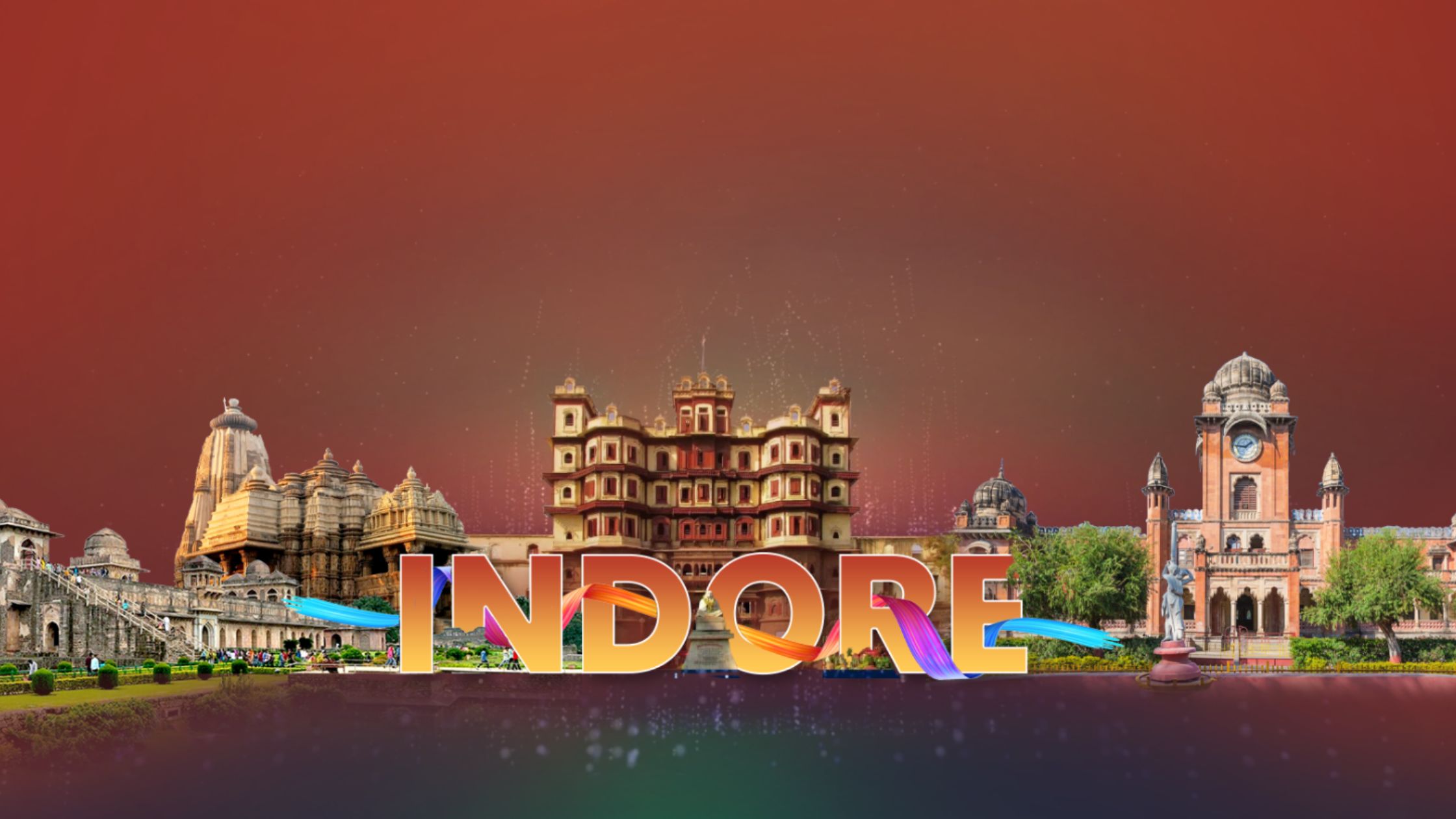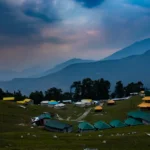
Kedarnath Temple: A Sacred Journey To Spiritual Majesty
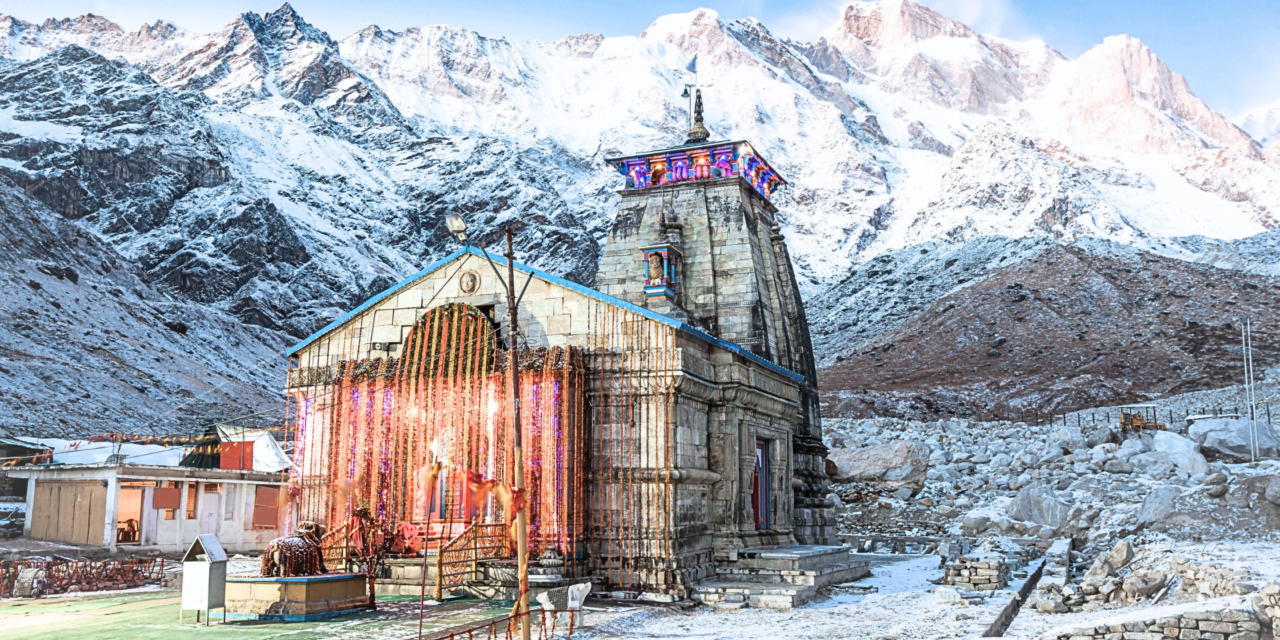
Nestled amidst the majestic peaks of the Garhwal Himalayas, Kedarnath Temple stands as a timeless symbol of devotion, spirituality, and natural grandeur. Situated in the Rudraprayag district of Uttarakhand, India, this ancient Hindu temple holds immense significance for pilgrims and travelers alike.
Steeped in mythology and history, Kedarnath jyotirlinga Temple is believed to have been constructed by the Pandavas, the legendary heroes of the Hindu epic Mahabharata. Dedicated to Lord Shiva, the temple is one of the twelve Jyotirlingas, which are considered to be the holiest abodes of the deity.
But Kedarnath is more than just a religious site; it’s a sanctuary where the soul finds solace amidst the breathtaking beauty of nature. Surrounded by snow-capped peaks, pristine rivers, and lush greenery, the temple offers a serene escape from the chaos of modern life.
Begin your adventure on the Kedarnath trek, a captivating journey through the Garhwal Himalayas of Uttarakhand, India. Spanning 16 kilometers, this scenic route leads to the renowned Kedarnath Temple, one of the holiest Hindu shrines. Offering awe-inspiring views of the Himalayas, the Kedarnath trekking experience is both invigorating and spiritually enriching.
In this blog, we will embark on a virtual journey to explore the enchanting allure of Kedarnath Temple. From its mythological origins to its architectural marvels, from the challenging trek to its serene ambiance, join us as we uncover the mystical charm and spiritual significance of this sacred abode nestled in the heart of the Himalayas.
Also Read: What Best Top 10 Tourist Places To Visit In India
- Kedarnath Temple History
- How to reach Kedarnath
- Kedarnath Opening & Closing Dates 2024
- Kedarnath Registration Process
- Kedarnath Helicopter Service
- Distance Of Kedarnath From Different States/ Cities
- Kedarnath Weather In 2024
- Best Time To Visit Kedarnath Temple
- Hotels Near Kedarnath Temple
- Places To Visit In Kedarnath
1. Kedarnath Temple History
The history of Kedarnath Temple Uttarakhand is indeed veiled in myth and legend, adding to its mystique as an ancient and sacred site. Here’s a more detailed exploration of its fascinating background:
- Legends: According to Hindu mythology, the Pandavas, the central characters of the epic Mahabharata, are credited with the construction of Kedarnath Temple. The legend narrates that after the great war, the Pandavas sought forgiveness from Lord Shiva for their sins committed during the battle. Lord Shiva, wanting to avoid them, transformed into a bull and dove into the ground at Kedarnath. The temple is believed to have been erected at the very spot where Lord Shiva disappeared, with the lingam inside said to be a naturally formed representation of the deity.
- Historical Evidence: Although pinpointing the precise date of the temple’s construction proves challenging, estimates suggest that Kedarnath is over 1,000 years old. Its enduring existence has been maintained through various renovations over the centuries, a testament to the enduring spiritual significance associated with this sacred site amidst the harsh weather conditions of the Himalayas.
- Shankaracharya’s Role: The venerable philosopher Adi Shankaracharya, who lived in the 8th century, is attributed with revitalizing the importance of Kedarnath Temple. There are even remnants of a monument believed to mark his resting place near Kedarnath, underscoring the historical and cultural significance associated with this revered sage.
- Significance: In contemporary times, Kedarnath stands as one of the twelve Jyotirlingas, considered the holiest shrines dedicated to Lord Shiva in Hinduism. This recognition elevates the temple to a place of paramount importance for devout pilgrims. Additionally, Kedarnath holds a prominent position within the Chota Char Dham pilgrimage circuit in the Himalayas, drawing pilgrims from across the country to embark on this sacred journey.
The intertwined layers of mythology, history, and spirituality contribute to the enduring allure of Kedarnath Temple, making it a profound destination for those seeking both religious and cultural experiences amidst the breathtaking landscapes of the Himalayas.
2. How to reach Kedarnath
Kedarnath, situated in the Rudraprayag district of Uttarakhand, India, holds significant religious importance as one of the Char Dham pilgrimage sites. Accessing Kedarnath typically involves a combination of road travel and trekking. There are three primary routes to reach Kedarnath:
By Road: The most common approach is via road. Travelers can opt for buses or cars from major cities such as Delhi, Haridwar, Rishikesh, and Dehradun to reach Gaurikund. Gaurikund serves as the starting point for the trek to Kedarnath. The road journey from Delhi to Gaurikund spans approximately 452 km and may take up to 12 hours.
By Train: Those preferring rail travel can reach Kedarnath through the nearest railway stations at Rishikesh (215 km), Haridwar (241 km), Dehradun (257 km), or Kotdwar (246 km). From these stations, one can hire a taxi or take a bus to Gaurikund.
By Air: For air travelers, the nearest airport is Jolly Grant Airport in Dehradun, approximately 239 km away from Kedarnath. From the airport, one can arrange for a taxi or take a bus to Gaurikund.
3. Kedarnath Opening & Closing Dates 2024
kedarnath shivling image
The Kedarnath Temple, devoted to Lord Shiva, stands as one of Hinduism’s holiest sites and is an integral stop on the Chota Char Dham pilgrimage route. Due to harsh Himalayan winters, the temple shuts its doors to devotees and reopens during the warmer months.
1. Kedarnath Opening Date 2024
Scheduled for Friday, May 10, 2024, the anticipated opening of Kedarnath Temple coincides with the auspicious occasion of Akshay Tritya. The exact date is traditionally disclosed on Mahashivratri by the priests at Ukhimath’s Omkareshwar Temple, relying on astrological calculations.
2. Kedarnath Closing Date 2024
Typically, Kedarnath Temple closes around two days after Diwali, observed on the day of Bhai Dooj. Although the precise closing date is declared during Vijaydashmi, the tentative estimate for 2024 is Thursday, November 14, 2024.
3. Pooja and Opening time of Kedarnath Temple
The daily rituals at Kedarnath Temple commence early in the morning at 4:00 AM with Maha Abhishek and conclude around 7:00 PM with the Shyan Aarti. Here’s a breakdown of the schedule:
- Morning Pooja, including Abhishek: 4:00 AM to 7:00 AM
- Temple Opens for Darshan: 6:00 AM
- Afternoon Break: 3:00 PM to 5:00 PM
- Evening Aarti (excluding Shayan Aarti): 6:00 PM onwards (during the summer season)
- Shayan Aarti: Timing varies depending on the queue for darshan.
4. Kedarnath Registration Process
To embark on the Kedarnath Dham Yatra pilgrimage, registration is a mandatory step. Follow these instructions for Kedarnath online registration:
- Visit the Uttarakhand Registration and Tourist Care (UTDB) website: https://registrationandtouristcare.uk.gov.in/
- Click on “Register” in the “Kedarnath Yatra” section.
- Opt for “New Registration.”
- Complete the registration form with your personal details and contact information.
- Upload a valid ID proof and a passport-sized photograph.
- Submit the registration fee (currently Rs. 150, subject to change).
- Upon successful registration, you will receive a confirmation email containing your registration number.
For additional information, refer to the following important websites:
- Uttarakhand Tourism – Kedarnath: https://registrationandtouristcare.uk.gov.in/
- Badrinath-Kedarnath Temple Committee: https://badrinath-kedarnath.gov.in/ (This website also provides helpline numbers for Kedarnath).
5. Kedarnath Helicopter Service
Kedarnath stands as one of the most sacred Hindu temples, situated in the Rudraprayag district of Uttarakhand, India. It holds the esteemed status of being one of the twelve Jyotirlingas, revered as the holiest shrines dedicated to Lord Shiva. The temple’s elevated location and the challenging trek route have led to the popularity of helicopter services among pilgrims making their way to this divine site.
For those considering Kedarnath helicopter booking, here’s a comprehensive guide:
- Booking: Secure your helicopter bookings through the IRCTC Heli Yatra website (https://www.heliyatra.irctc.co.in/), the authorized ticketing platform endorsed by the Uttarakhand Government.
- Season: Helicopter services typically commence around May, aligning with the Hindu calendar. Given the high demand, especially during the peak season, it is advisable to book well in advance to secure your slots.
- Helipads: Kedarnath is served by three helipads: Guptkashi, Phata, and Sirsi.
- Kedarnath helicopter price: The cost of a round-trip ticket for a helicopter to Kedarnath varies based on the departure helipad:
Sirsi Helipad: INR 5498/-
Phata Helipad: INR 5500/-
Guptkashi Helipad: INR 7750/-
- Companies: Several helicopter companies are authorized by the Uttarakhand Government each season. These may vary slightly from year to year.
Additionally, here are some crucial tips to enhance your Kedarnath helicopter service experience:
- Complete Chardham Yatra Registration: Ensure you complete the Chardham Yatra Registration, a mandatory step for booking helicopter services to Kedarnath. You can register online at https://registrationandtouristcare.uk.gov.in/ .
- Book Well in Advance: Given the swift booking pace, particularly during peak periods, secure your tickets as soon as your travel dates are confirmed.
- Check Weight Restrictions: Be aware of the weight limit imposed for passengers on helicopters heading to Kedarnath. Verify this information before booking your tickets.
- Prepare for High Altitude: Kedarnath’s lofty elevation necessitates preparation. Consult with your doctor before embarking on the journey, especially if you have any pre-existing health conditions.
6. Distance Of Kedarnath From Different States/ Cities
Distance from Kedarnath to the places by road are:
| Places | Distance |
| Haridwar to Kedarnath distance | 239 kms |
| Delhi to Kedarnath distance | 452 kms |
| Surat to Kedarnath distance | 1675 kms |
| Uttarakhand to Kedarnath distance | 254 kms |
| Jammu to Kedarnath distance | 788 kms |
| Manali to Kedarnath distance | 737 kms |
| Patna to Kedarnath distance | 1245 kms |
| Srinagar to Kedarnath distance | 1056 kms |
| Bhopal to Kedarnath distance | 1269 kms |
| Gwalior to Kedarnath distance | 767 kms |
| Kolkata to Kedarnath distance | 1898 kms |
| ludhiana to Kedarnath distance | 508 kms |
| Moradabad to Kedarnath distance | 374 kms |
| Noida to Kedarnath distance | 465 kms |
| Ujjain to Kedarnath distance | 1323 kms |
| Raipur to Kedarnath distance | 1755 kms |
| Amritsar to Kedarnath distance | 648 kms |
| Agra to Kedarnath distance | 649 kms |
| Ahmedabad to Kedarnath distance | 1429 kms |
| Nagpur to Kedarnath distance | 1492 kms |
| Amarnath to Kedarnath distance | 1158 kms |
| Kashmir to Kedarnath distance | 1046 kms |
| Guptkashi to Kedarnath distance | 33 kms |
| Phata to Kedarnath distance | 19 kms |
| Bareilly to Kedarnath distance | 424 kms |
| Mussoorie to Kedarnath distance | 260 kms |
| Kurukshetra to Kedarnath distance | 378 kms |
| Chandigarh to Kedarnath distance | 443 kms |
| Badrinath to Kedarnath distance | 218 kms |
| Rishikesh to Kedarnath distance | 216 kms |
| Dehradun to Kedarnath distance | 254 kms |
| Varanasi to Kedarnath distance | 1226 kms |
| Hyderabad to Kedarnath distance | 1989 kms |
| Kanpur to Kedarnath distance | 902 kms |
| Gangotri to Kedarnath distance | 408 kms |
| Nainital to Kedarnath distance | 295 kms |
| Agra to Kedarnath distance | 649 kms |
| Ahmedabad to Kedarnath distance | 1429 kms |
| Indore to Kedarnath distance | 1397 kms |
| Jaipur to Kedarnath distance | 752 kms |
| Tungnath to Kedarnath distance | 78 kms |
| Lucknow to Kedarnath distance | 956 kms |
| Bangalore to Kedarnath distance | 1980 kms |
| Haldwani to Kedarnath distance | 327 kms |
| Mumbai to Kedarnath distance | 1928 kms |
7. Kedarnath Weather In 2024
I don’t have specific weather forecasts for future dates, but on the based on historical averages, information about the expected Kedarnath weather in 2024:
- Kedarnath temperature in may:
Expect pleasant weather in Kedarnath during May, with temperatures ranging approximately between 3°C (37°F) and 14°C (57°F). This makes it a favorable time for trekking and sightseeing.
- Kedarnath temperature in june:
June is likely to be the warmest month in Kedarnath in 2024, with temperatures averaging around 4°C (39°F) to 14°C (57°F).
- Kedarnath temperature in july:
The monsoon season arrives in July, bringing a possibility of rain and slightly cooler temperatures. It’s advisable to check for specific forecasts closer to the date.
- Kedarnath temperature in october:
In October, the monsoon recedes, leading to a significant drop in temperatures. Expect highs around 8°C (46°F) and lows reaching -1°C (30°F).
8. Best Time To Visit Kedarnath Temple
Here’s a comprehensive breakdown of the seasons in Kedarnath Uttarakhand to help you make an informed decision about the best time for your visit:
- Summer (April-June):
This period marks the peak season in Kedarnath, with the temple open for darshan. The weather is delightful, offering an ideal environment for sightseeing and trekking. However, it’s essential to note that this time can be bustling with crowds seeking spiritual experiences.
- Monsoon (July-August):
The monsoon season in Kedarnath is characterized by unpredictable weather, featuring heavy rainfall that occasionally triggers landslides. Due to safety concerns, the temple is usually closed during this period. It’s advisable to avoid planning your visit during these months.
9. Hotels Near Kedarnath Temple
10. Places To Visit In Kedarnath
Kedarnath, situated amidst the majestic Himalayas, holds immense religious significance. While the Kedarnath Temple remains the primary attraction, there are other captivating places to explore in the vicinity, offering stunning natural beauty, historical importance, and cultural experiences. Here are some top destinations around Kedarnath:
1. Vasuki Tal
Vasuki Tal is a glacial lake situated in the Kedarnath Dham of Uttarakhand, India, at an elevation of 14,200 feet above sea level. Surrounded by snow-capped peaks, the lake derives its name from Vasuki, the serpent king in Hindu mythology.
A favored trekking spot, Vasuki Tal offers a moderately challenging trek that commences from Kedarnath and follows the upstream course of the Mandakini River. Completing the trek takes approximately 6-7 hours along a well-marked trail.
The lake’s scenic beauty is enhanced by the clear waters and the presence of various wildflowers amidst the surrounding mountains. Vasuki Tal is a habitat for diverse bird species, including snowcocks, Himalayan monals, and lammergeyers.
Considered a sacred lake, Vasuki Tal is believed to be the dwelling place of Vasuki. Hindus hold the conviction that taking a dip in the lake can purify one of their sins. The site also attracts numerous pilgrims annually, making it a significant pilgrimage destination.
2. Triyuginarayan Temple
The Triyuginarayan Temple, situated in the Rudraprayag district of Uttarakhand, India, is an ancient Hindu temple offering breathtaking views of the Garhwal region’s snow-capped mountains. Nestled in the scenic Triyuginarayan village at an elevation of 1,980 meters, this temple is dedicated to Lord Vishnu, the preserver god in the Hindu trinity.
Its name, “Triyuginarayan,” translates to “Three Yugas Narayan,” signifying “Narayan of the Three Yugas,” suggesting the temple’s existence across three ages or yugas. The temple’s architecture resembles the nearby Kedarnath Temple and is attributed to Adi Shankaracharya, an 8th-century scholar credited with reviving Hinduism.
Inside the main shrine resides a two-foot-tall silver image of Lord Vishnu (Narayana), accompanied by his consorts, Goddess Lakshmi and Saraswati. A distinctive feature of the Triyuginarayan Temple is the eternal fire burning in front of it. Legend has it that this fire has been continuously burning since the marriage of Lord Shiva to Parvati, making it a significant pilgrimage site for Hindus. The temple is also referred to as the Akhand Dhuni Temple, meaning “Unextinguished Fire Temple.”
3. Guptkashi
Guptkashi, situated in the Rudraprayag district of the Indian state of Uttarakhand, is a town and nagar panchayat nestled at an elevation of 1,319 meters (4,327 ft) in the Kedar-khanda of the Garhwal Himalayas. Renowned for its ancient Vishwanath Temple dedicated to the god Shiva, resembling the one in Varanasi (Kashi), Guptkashi also houses a notable temple dedicated to Ardhanareshvara, depicting the half-man, half-woman form of Shiva and Parvati. The name Guptkashi carries legendary significance tied to the Pandavas, heroes of the Hindu epic Mahabharata.
Perched on the banks of the Mandakini River, a Ganges tributary, the town is enveloped by mountains and forests, making it a sought-after destination for both pilgrims and tourists. The Vishwanath Temple, believed to be constructed by the Pandavas, holds significance as one of the 12 Jyotirlingas, sacred shrines of Shiva. Another key temple is the Ardhanareshvara Temple, dedicated to the symbolic union of the masculine and feminine principles embodied by Shiva and Parvati.
Guptkashi serves as a popular starting point for treks to Kedarnath, one of Hinduism’s Char Dhams, or holy sites. The 16 km trek to Kedarnath typically takes 6-7 hours to complete.
Accessible by road, Guptkashi is well-connected to various parts of Uttarakhand. The nearest airport is Jolly Grant Airport, approximately 180 km away from Guptkashi.
4. Deoria Tal
Deoria Tal, alternatively spelled Devaria or Deoriya, is a captivating lake situated approximately 3 kilometers from the villages of Mastura and Sari on the Ukhimath-Chopta road in the state of Uttarakhand, India. Nestled in the Garhwal Himalayas at an elevation of 2,438 meters, Deoria Tal is enveloped by lush green forests and provides breathtaking views of snow-capped mountains, including the majestic Chaukhamba peak.
This pristine lake holds significant religious value for Hindus, Jains, Buddhists, Sikhs, and other religious groups. According to Hindu mythology, the Devas (celestial beings) bathed in this lake, hence the name “Deoria Tal,” which translates to “Lake of the Gods.” The lake is also believed to be the “Indra Sarovar” mentioned in the Puranas, a collection of ancient Hindu scriptures.
Deoria Tal is a favored trekking destination, particularly for beginners, owing to its moderate difficulty level and the stunning scenery it offers. The trek to the lake involves a 2-3 kilometer uphill climb from Sari village. Visitors have the option to camp overnight near the lake, immersing themselves in the tranquility of the surroundings and witnessing the breathtaking sunrise over the Himalayas. While camping facilities and shops selling tea and snacks are available near the lake, they close down at sunset.
5. Ukhimath
Ukhimath, a charming town nestled in the Rudraprayag district of Uttarakhand, India, rests at an elevation of 1,311 meters. It holds significance as the winter residence of deities from two important Hindu temples, Kedarnath and Madhyamaheshwar. During the harsh winter months, when heavy snowfall makes these shrines inaccessible, the Utsava idols from these temples are brought down to Ukhimath and worshipped here for six months.
Ukhimath itself is a pilgrimage destination and serves as a base for exploring nearby attractions like the Madhyamaheshwar Temple, Tungnath Temple, and Deoria Tal, a scenic freshwater lake. The town is also adorned with ancient temples dedicated to various Hindu gods and goddesses. Frequented by the Rawals, the head priests of Kedarnath, Ukhimath offers a serene and spiritually enriching atmosphere.
Conclusion
Embarking on a journey to Kedarnath Temple is not just a physical pilgrimage but a profound spiritual experience deeply rooted in mythology, history, and the natural splendor of the Himalayas. As we’ve explored in this comprehensive guide, Kedarnath Temple holds immense significance as one of the holiest abodes of Lord Shiva, attracting pilgrims from far and wide.
From delving into the temple’s rich history, its mythological origins intertwined with the epic Mahabharata, to understanding the significance of its opening and closing dates, and the best times to visit amidst the changing seasons, we’ve covered every aspect to help you plan your sacred journey.
Whether you choose to trek through the rugged terrain, following the footsteps of the devout, or opt for the convenience of helicopter services, the path to Kedarnath promises awe-inspiring vistas and spiritual rejuvenation.
Exploring the surrounding attractions such as Vasuki Tal, Triyuginarayan Temple, Guptkashi, Deoria Tal, and Ukhimath offers a holistic experience, blending nature’s grandeur with the serenity of ancient religious sites.
As you plan your visit, ensure to follow the necessary registration procedures, book accommodations in advance, and make necessary travel arrangements to fully immerse yourself in the divine ambiance of Kedarnath and its surroundings.
Whether you seek solace, seek adventure, or simply wish to marvel at the wonders of nature, Kedarnath Temple and its environs promise an unforgettable journey to spiritual majesty amidst the Himalayas.
Is the trek to Kedarnath Temple difficult?
While the trek can be physically challenging due to the steep terrain and high altitude, it is a spiritually rewarding experience for devotees.
What are the safety measures in place for visitors?
Local authorities and temple management have implemented various safety measures, including medical facilities and emergency evacuation services, to ensure the well-being of visitors.
Can non-Hindus visit Kedarnath Temple?
Yes, Kedarnath Temple welcomes visitors of all faiths to experience its spiritual aura and architectural splendor.

